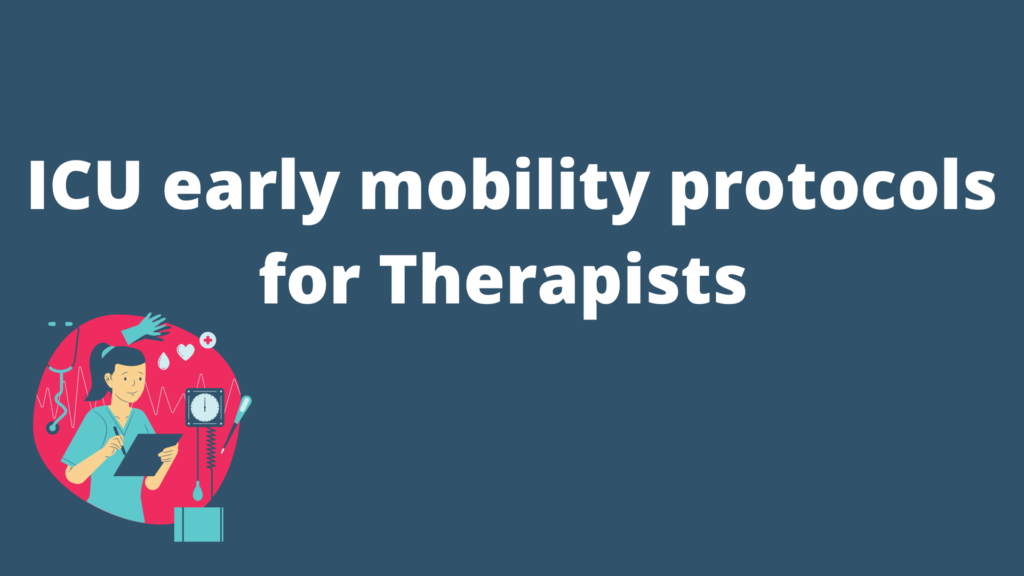In this article I’ll explain the benefit of early mobilization programs for ICU patients working with both Physical and Occupational Therapy.
What is Early Mobility?
Early mobility is a standardized approach from a nursing based protocol, combined with the rehab team, to increase mobility of the critically ill as soon as safely possible.
Early mobility is based on progression through phases of care. Activity is initiated early and advanced aggressively.
What are the benefits of Early Mobility
- Minimized risk factors of bed rest
- Decreased hospital length of stay
- Decreased quality of care
- Decreased ventilator acquired pneumonia
- Less Muscle atrophy and generalized weakness
What are the phases of early mobility
Phase 0: Critical Care by nursing (Acute)
- Most patients in this phase are unstable and unable to fully participate with therapy.
Goal: Positioning and range of motion for reduced pressure sores and joint contractures
- PROM should be completed 3x per day by nursing
- Pt should be turned every 2 hours at the minimum
- OT consultation if splint evaluation needed
Phase 1: Medical Bedrest
Supine in bed activities are performed in prep for early mobility as out of bed activities may be contraindicated.
Goal: Pt will able to move upper/lower extremities against gravity and tolerate bed in chair position.
- PROM 3x per day by nursing
- Pt should be turned every 2 hours at the minimum
- PT/OT resistive therex as needed
- Bed chair progression 20-60 min
Phase 2: Out of bed mobility
Pt may still be in an acute or subacute stage of care with multiple medical issues, but mostly stable. They may have limited tolerance for therapy.
Goal: Patient will be able to sit at EOB
- Patient can sit EOB with feet on floor with stable vitals with or without support for ADL.
Phase 3: Mobilization with Assistance
Patient continues to be in acute or subacute stages of care and able to progress to sitting, standing and transfers.
Goal: Standing and bed to chair transfers
- Includes all of phase 2
- Weight bearing and weight shifting
- Transfers to commode, chair and wheelchair
- Progress from 2 person transfer to 1 person transfer
Phase 4: Limited ambulation with assistance
Patient now beginning to progress toward functional ambulation with assistive device.
Goal: Pt tolerate functional ambulation for short distance for ADL
- Phase 3
- My start walking short distances to bathroom, standing at sink for hygiene, and toilet transfers
Phase 5: Advanced functional activities with walking
- Patients in subacute stage of care progressing toward increased functional independence for ADL, IADL, and returning to work.
Goal: Pt will walk household distances with assistive device as needed
How to incorporate early mobility into your practice?
Many hospitals have their own early mobility protocols and they may be slightly different. When I was working in Las Vegas we had laminated early mobility phases on each ICU patient’s door.
During patient rounding this made it easy to see how the patient was progressing. It also helped nursing and therapy to know what they should be doing with their patients.
Now you know about the phases of early mobility, you can make your own laminated printout our download this table here.
Hope this was helpful. If you’re interested in becoming and OT learn more by clicking here.

David is the lead editor of OT Focus. He has been practicing as an Occupational Therapist since 2013. He specializes in acute care, hand therapy, and ergonomics.




